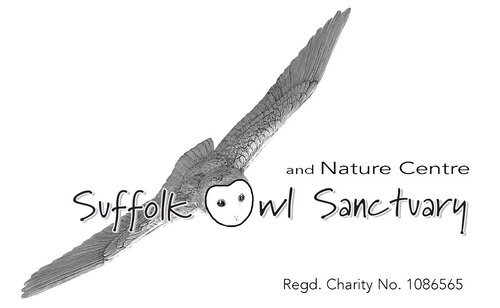This week saw great excitement at S.O.S. when a team of Barclays Bank volunteer management & staff arrived at the Sanctuary to install a special Sensory Garden, which they had kindly agreed to sponsor.
Among the visitors we welcome to the Centre throughout the year are many disadvantaged children & young adults who are brought along by their carers to see the beautiful owls and other birds of prey in their aviaries and in flight during the demonstrations that we give during the summer months.
However, in order to enhance the visits of these youngsters we thought it would be a good idea to develop part of the centre as an additional experience to widen the scope & enjoyment of their visit. Transforming the centre forecourt of the Centre as a Sensory Garden seemed to be an idea with prospects and with this in mind, our fundraiser-in-chief, the redoubtable Maz, approached a number of corporations to see if they would be interested in funding the project.
Before & after - what a difference a day makes!
To their great credit, Barclays Bank gave us an almost immediate 'thumbs up' and after an exploratory visit, returned on the big day with all the equipment necessary to install the garden, ably aided and abetted by a group of about 20 of their staff who had volunteered to graft on our behalf.
The transformation was remarkable, not least because the Barclays crew were able to declare 'mission accomplished' within the space of a day.
A sheltered garden seat amongst the flower beds
The Sensory Garden was designed by Barclays to stimulate the 5 body senses - touch, smell, sight, taste and hearing. To do this they incorporated as many colours, sounds and textures into the fabric of the garden as possible. Adding colour was the easy bit, as they used a great variety of plants to vibrant, multi-hued effect. To stimulate hearing, the garden benefits from having an array of windchimes within the trees and the sound of the water feature which was installed, bringing the trickling sound of a stream to the area. To stimulate taste and smell, a mixture of herbs and plants like lemongrass, mint and a curry plant (which leaves a distinctive smell of curry when touched) were added to the blooms Visitors are guided towards the bark of the trees, rippling water and some of the sturdier plants & leaves to satisfy the tactile senses.
The water feature - fountain and shale
As you will see from the pictures, the end result is a beautiful garden which has added an extra dimension to the Suffolk Owl Sanctuary and one that invites young and old alike to wander through it and admire the tranquility and beauty it provides. We are sure it will provide a rewarding experience for all visitors, especially those who are disadvantaged by lack of sight, hearing and other faculties, and we'd like to say a very big THANK YOU to Barclays Bank and their team of volunteers for their generosity and hard work in providing and building the garden.






















































